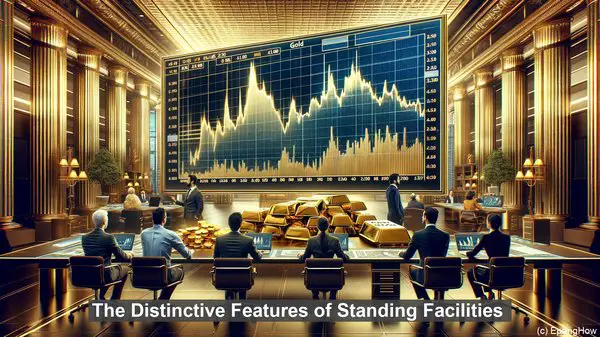Introduction: The Essence of Monetary Policy
Greetings, fellow learners! Before we embark on our exploration of open market operations and standing facilities, let’s establish a foundational understanding of monetary policy. Monetary policy refers to the actions and strategies employed by central banks to regulate the supply of money, manage interest rates, and ensure the stability of financial systems. It plays a crucial role in influencing economic growth, controlling inflation, and maintaining overall monetary equilibrium.
Open Market Operations: The Market’s Pulse
Open market operations (OMOs) are a primary tool in a central bank’s arsenal. In essence, OMOs involve the buying and selling of government securities, such as treasury bills and bonds, in the open market. When a central bank purchases these securities, it injects money into the system, thereby increasing liquidity. Conversely, when it sells these securities, it absorbs money from the market, reducing liquidity. The objective of OMOs is to manage the money supply, influence interest rates, and maintain stability in financial markets.

The Nuances of OMOs: Types and Impact
OMOs can be categorized into two types: outright and repurchase agreements (repos). Outright purchases involve the permanent acquisition of securities, while repos are temporary, with the central bank agreeing to buy back the securities at a later date. The impact of OMOs extends beyond liquidity management. By influencing interest rates, OMOs can stimulate or dampen borrowing and investment activities, thus impacting economic growth. Additionally, OMOs can have a ripple effect on exchange rates, as they influence the supply and demand dynamics of a currency.
Standing Facilities: The Monetary Safety Net
While OMOs primarily focus on managing liquidity in the broader market, standing facilities serve as a safety net for banks. Standing facilities include two key instruments: the marginal lending facility and the deposit facility. The marginal lending facility allows banks to borrow from the central bank during times of financial stress, ensuring they have access to funds when needed. On the other hand, the deposit facility enables banks to park excess funds with the central bank, earning a predetermined interest rate. These facilities provide stability to the banking system and act as a buffer during turbulent periods.
The Distinctive Features of Standing Facilities
Unlike OMOs, which are market-driven and involve the buying and selling of securities, standing facilities are more of a direct interaction between banks and the central bank. The interest rates associated with standing facilities, often referred to as policy rates, serve as a benchmark for other interest rates in the economy. By adjusting these rates, central banks can influence lending and borrowing costs, thus impacting credit availability and economic activity.

The Symbiotic Relationship: OMOs and Standing Facilities
While OMOs and standing facilities have distinct operational dynamics, they are not mutually exclusive. In fact, they often complement each other. For instance, if a central bank observes a liquidity shortage in the market, it can conduct OMOs to inject funds. However, if the shortage persists or intensifies, standing facilities can provide an additional avenue for banks to access liquidity. This interplay between the two mechanisms allows central banks to effectively manage liquidity under varying market conditions.
